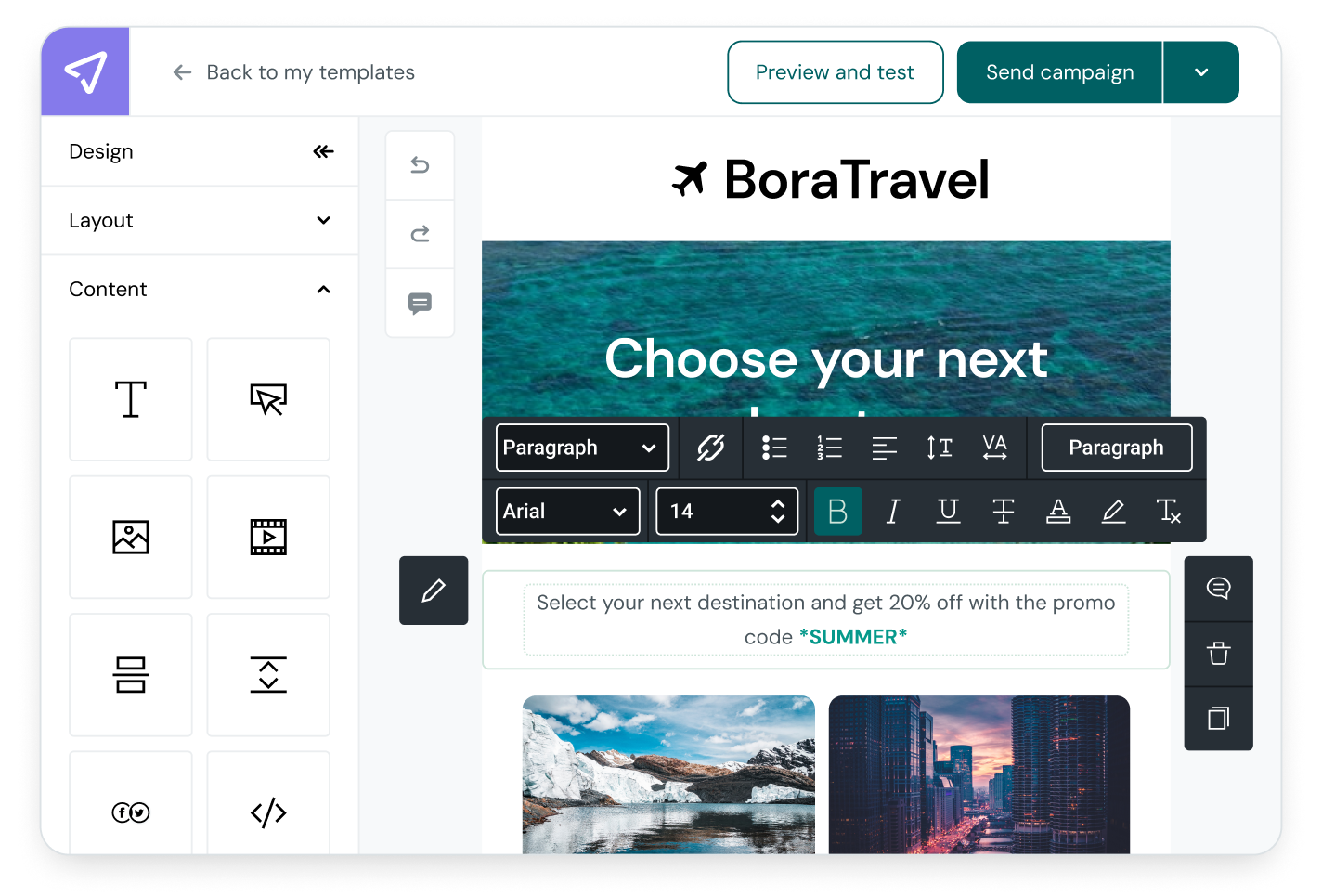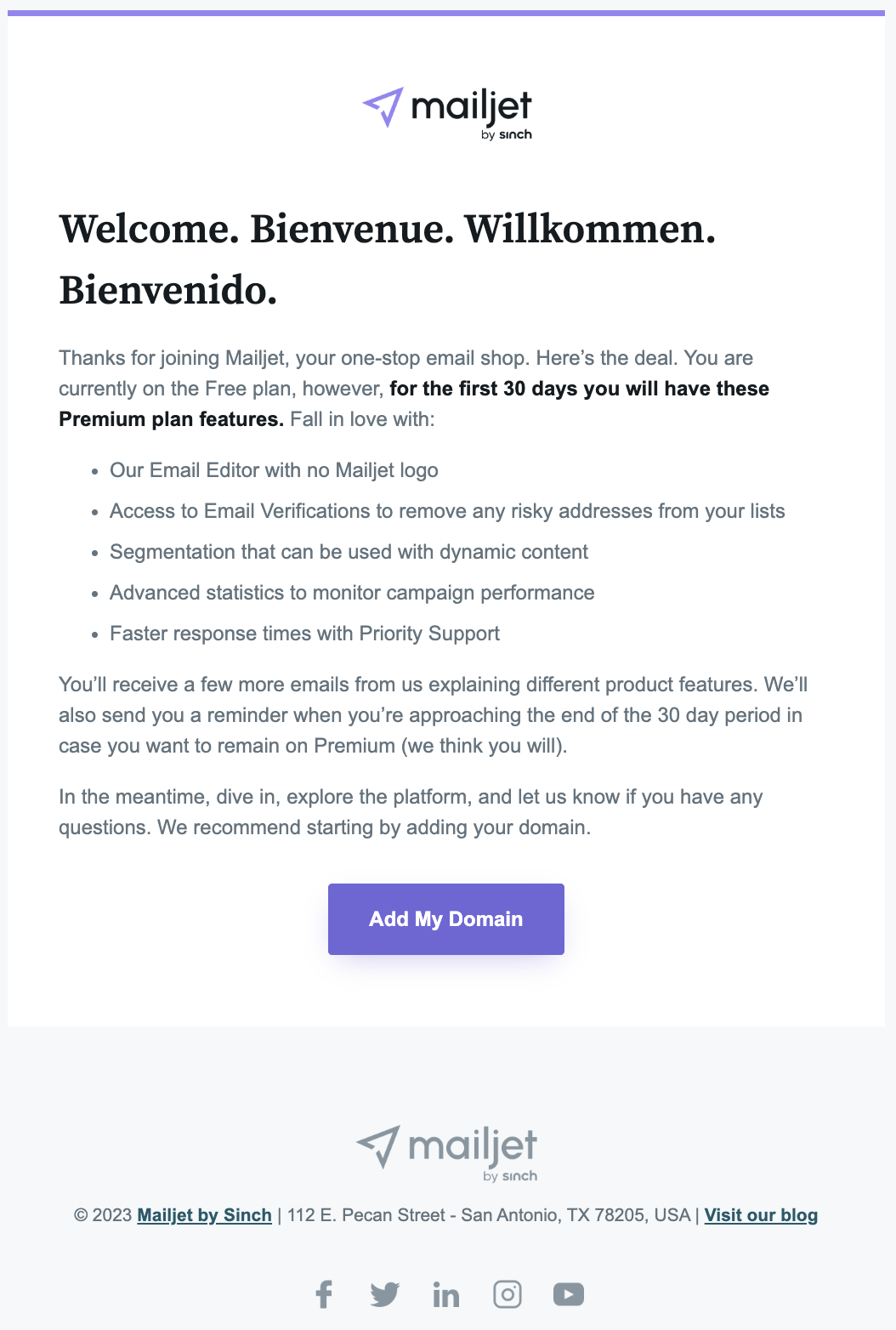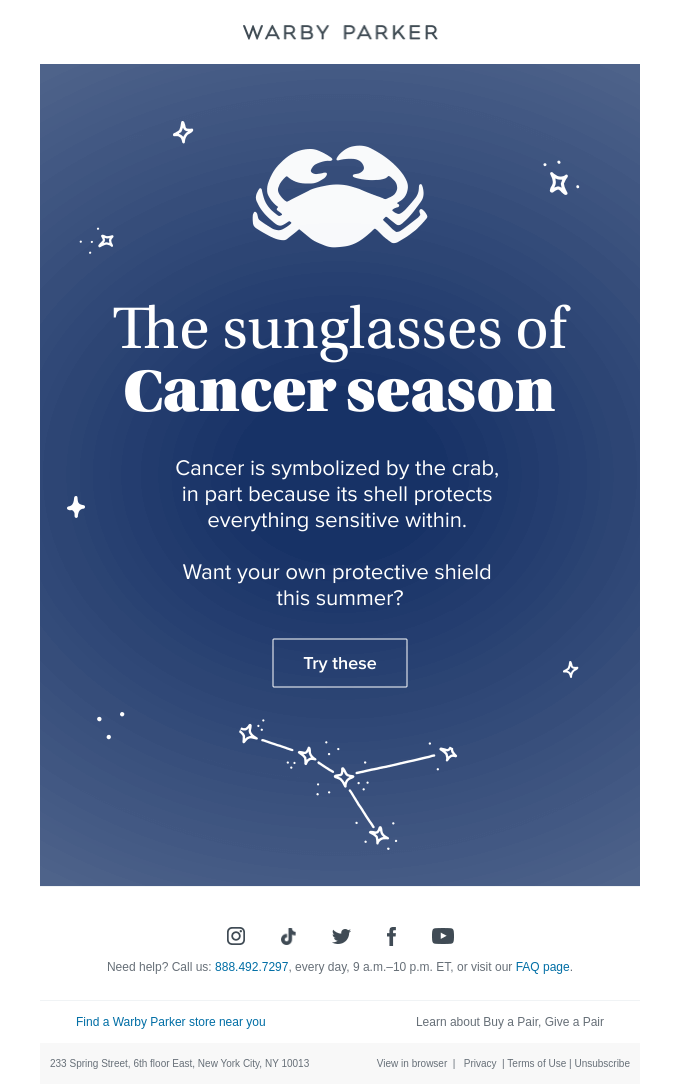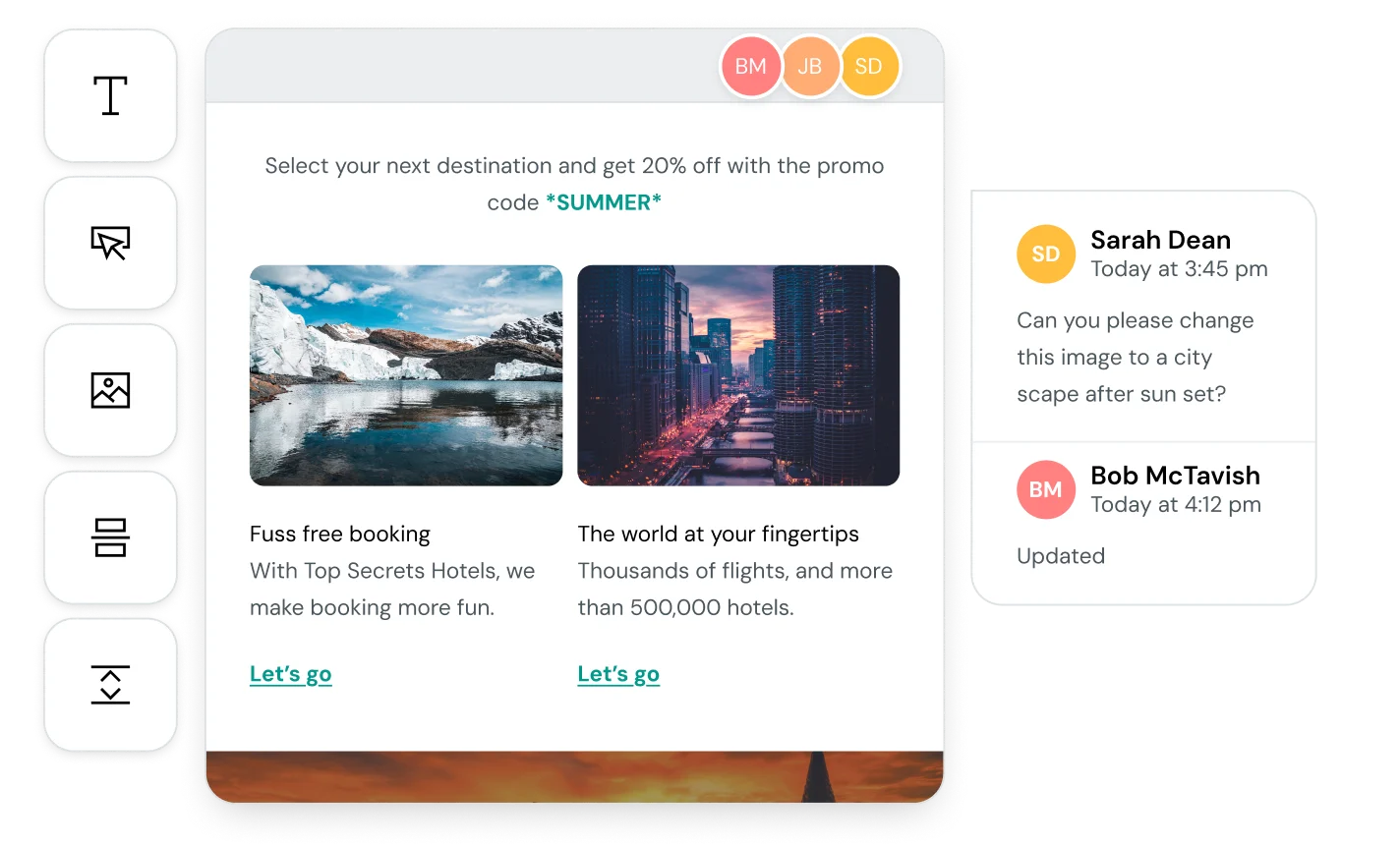Company
Email Academy: Mastering the basics of email marketing

Company

In today’s rapidly evolving digital landscape, where social media and search engines dominate marketing conversations, one medium continues to top them all: email marketing.
However, despite this there are still marketers yet to set up a single email marketing campaign themselves. Which is fine, by the way – we’ve all got to start somewhere.
That is precisely one of the reasons behind the launch of our new webinar series: Email Academy. In our first episode – Unlocking The Power of Email Marketing –our fantastic Senior Email Marketing Manager, Julia Ritter, and our talented Product Manager, Natalie Lynch, actually gave those new to the subject an A-Z run-through.
Now if you missed it and still want to learn all there is to know about creating a winning email marketing strategy, we’ve put together a little recap for you.
Now, you’re probably wondering what exactly email marketing is.
Email marketing is a digital marketing strategy that involves sending targeted emails to a group of recipients with the goal of promoting products, services, or building client relationships. To this day, it remains one of the key channels for organizations to communicate with their audience.
But what makes email marketing so impactful? Well, a carefully created strategy allows you to:
We live in a world where our inboxes are constantly flooded with information. So, we wouldn’t fault you for asking, “Why email”? Well, the answer lies in its intimate nature: Email isn’t a fleeting post or a momentary scroll on a feed – it’s a direct line to your audience’s personal space.
Email marketing gives you the power to reach your subscribers’ inboxes. With email, you can deliver carefully crafted messages, tailored offers, and valuable insights directly to those who have expressed interest in your brand.
So, now you know why you should get involved with email marketing, let’s look at the how.
“OK, great – got it. I need an email marketing strategy. But how do I go about creating one?”
We know this is a common question, which is why Julia kicked off the webinar by outlining the essential steps to follow even before building out your first email marketing campaign. Let’s see what those steps are.
First and foremost, your top priority should be to define your goals. What is it you want to get from your email marketing campaign? What do you want your customers to achieve? What are they expecting to receive from you?
Answering these types of questions will help define the type of campaign you should run, how often, and what content to include. For example, if your goal is to drive traffic to your blog, then sending a weekly newsletter with your latest articles would help you achieve just that.
If you don’t set concrete goals from the start, your email blasts will be sailing away in the wind without a compass.
To start an email marketing campaign, you’re going to need people to send your content to, right? Ideally engaged subscribers interested in what you have to say. And many senders’ first temptation is to purchase a database.
Well, that would be a big mistake. Contrary to popular belief, less is more when it comes to building an email subscriber list.
First rule email marketers should remember is that you only want to be sending communications to people interested in receiving them. Unsolicited email blasts will only result in poor stats, low deliverability, and affect your sender reputation. Plus, you’ll be toeing the line with data protection laws such as GDPR and CAN-SPAM.
Building a high-quality, engaged subscriber list takes time – and a lot of patience. Need some help? We’ve put together a list of tips you won’t want to miss.
Producing high-value content is a no brainer.
For an email marketing campaign to be successful, you need to give your subscribers what they want. What were they promised before signing up? Was it a list of weekly promo deals? Content to help them skill up within a certain area of their profession? Or maybe unique industry insights?
Whatever it was, you must deliver on that promise. Providing value is key for maintaining your brand reputation as well as an engaged email subscriber base – both important elements of a successful marketing strategy.
Once you’ve identified what your goals are, who you want to send to, and what type of content you want to send, it’s time to draft your first email!
Now, if you’re just starting out, you should consider using an email editor. These platforms allow you to edit responsive email templates or build your campaign from scratch by easily dragging and dropping different elements such as images, calls-to-action, and text blocks into place.
They’re completely customizable, too, so you can design them to fit within your brand guidelines.

Let’s be honest: Not everybody on your subscriber list is going to have the same needs, preferences, or be at the same point in the buyer’s journey.
That’s why email segmentation is key.
By dividing your audience into distinct segments (think demographics, behavior, interests, etc.), you can create highly targeted and personalized content. This targeted content is going to be far more impactful to subscribers and enhance the likelihood of engagement or conversion.
For example, if you ran an international clothing store, you could send tailored promotions for winter coats to customers in colder regions, while offering swimsuits to those in warmer areas.
Makes sense, right?
So, once the campaign’s been sent, you can put your feet up, right? Well, for a moment, anyway. But after you’ve given subscribers time to interact with your content, you’ll need to analyze the results.
This is important for two reasons:
Which leads us on nicely to our last point…
Based on the insights drawn from your analysis, your last step is to now optimize future email campaigns. Insights from metrics might give you some answers, like what time or what day works best in terms of engagement. But it might also raise some questions, like what type of subject line might help push those open rates higher.
Email marketing is all about experimenting and A/B testing is a big part of that. You can A/B test various elements of your emails such as subject lines, content, design, and CTAs in an effort to extract as much value from each campaign.
We’ll dive into this in more detail a little later.
Emails come in all shapes and sizes. However, despite the innumerous designs, styles, and templates available there are certain email types that are core to every strategy.
We’ll quickly run through a few of them now.
The welcome email is typically sent after someone signs up for your product, platform, or newsletter. Its goal is to greet them warmly, welcome them to the “club”, and set the tone for your brand relationship.
A welcome email typically includes:
As the name suggests, you should send a welcome email as soon as a subscriber joins your email list or first interacts with your brand. The timing is critical because it captures their initial interest and enthusiasm. You might even want to automate your welcome emails to ensure they are sent promptly.

One key point Julia also brought up in the webinar was the importance of the double opt-in email.
If you’ve not come across this term before, a double opt-in is:
Essentially, this adds an extra layer of consent and confirmation of interest compared to single opt-in, where subscribers are added to a list immediately after entering their email address. While marketers are sometimes reluctant to embrace double opt-in because it requires an extra step from subscribers, it leads to a more engaged and higher-quality email list.
As Julia pointed out in the webinar, people tend to use false email addresses when signing up for promo codes or free downloads. They have no intention (or interest) in interacting with your brand beyond that point.
So, bin them.
Get them off your list and build out a more reputable and engaged subscriber base.
Promotional emails typically alert subscribers to a new product or service. As an incentive to continue to engage with the brand, they often include a promo code or some form of discount.

Another trait of promotional emails is they tend to be behavioral-based and personalized to the recipient’s interests.
For example, imagine you’re a small online retailer and an email subscriber shows interest in a range of your sunglasses. They might’ve signed up to your newsletter from that page, clicked through to your latest offers on sunglasses, or expressed interest through your email preference center. Now imagine you have a new launch planned for the coming week: brand new sunglasses perfect for the winter sun. It might be worthwhile sending a personalized promotional email to this subscriber, informing them of this new offer.
The staple to every email campaign diet is the newsletter.
It’s like the Swiss Army Knife of the email world, being used for a various purposes. Your newsletter could contain valuable content such as:
The list is literally endless! We’ve added one our recent newsletter’s below as an example.

The reason they form a critical part of your email marketing strategy is twofold. They allow you to regularly contact and nurture subscribers by establishing yourself as an industry leader, while also driving qualified traffic to your website (and hopefully, increasing conversions.)
We did briefly go over email metrics and campaign analysis a little earlier on in the post, but now let’s take a deeper dive into how to dissect your campaign performance.
We’re going to split the key metrics you need to monitor into two different categories:
These are metrics related to the technical side of your email campaign, such as delivery rate and bounce rate. They indicate how healthy your email subscriber list is and whether it needs any pruning.
The next set of metrics focus on how recipients are interacting with your campaign. That is, whether they’re opening it, reading through your content, and taking action. This includes your open rate, click rate, and unsubscribe rate.

If you find this article helpful, you’ll be happy to hear we’re running an entire webinar series to you develop and launch a successful email marketing strategy. Throughout the series, we’ll teach you how to build high quality email lists, craft amazing campaigns, and optimize your strategy. Plus, we’ll show you how to do all of this on Mailjet.
Check out past webinars in our YouTube channel and sign up to our Email Academy email list to stay in the loop regarding new episode releases.